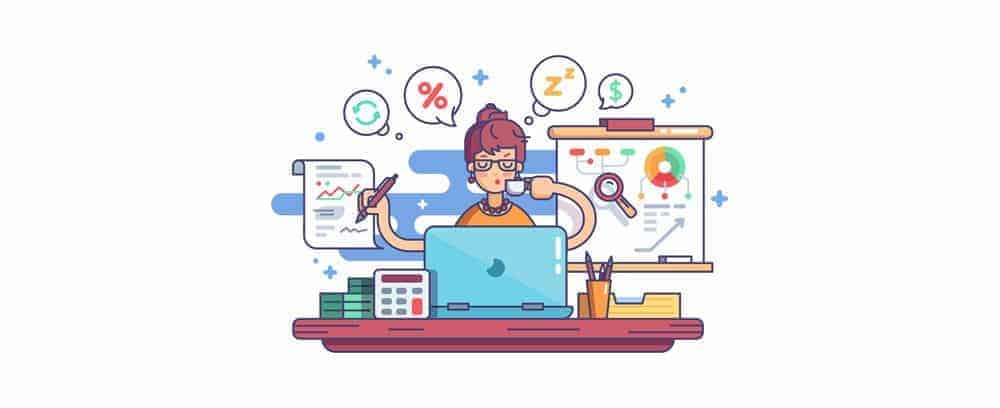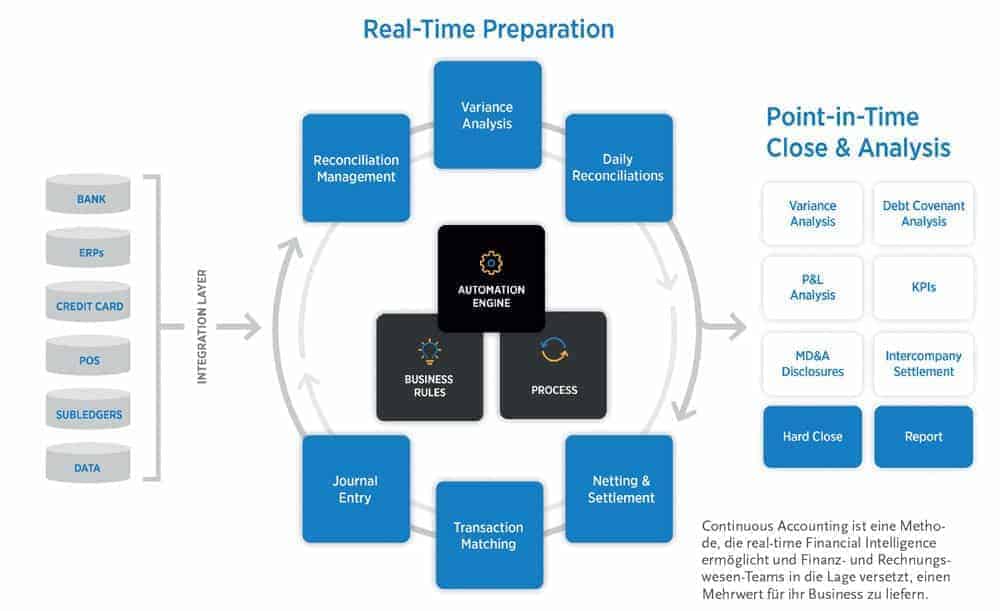Financial accounting rethought


 Classic financial accounting processes have remained unchanged for several decades in some cases. With the conventional record-to-report processes, the financial close is ensured at the end of the period.
Classic financial accounting processes have remained unchanged for several decades in some cases. With the conventional record-to-report processes, the financial close is ensured at the end of the period.
As part of the financial closing process, information from bank accounts, general ledger and subledger accounting as well as other data from ERP systems is processed, evaluated and the financial statements are prepared on this basis.
Traditional record-to-report processes often take many days and result in a heavy workload for finance staff at the end of the month. This often results in risky manual processes - even for agile companies.
Due to increasing complexity and the high pace of business, the pressure on finance departments is growing enormously. Forecasts and planning of the financial situation are not only necessary and useful for the management on an ad hoc basis.
After all, management wants to make strategic business decisions based on real-time information. For this purpose, it is necessary to provide the information on the financial statements on a daily basis.
A new process called "continuous accounting" provides support in this regard.
What is Continuous Accounting and what opportunities does it create for finance departments?
Continuous accounting defines the transformation of tasks in finance and accounting, which arise at financial close and thus regularly at the end of each month, quarter, half-year or year, from a point load to a continuous process.
This is made possible by permanent reconciliations, evaluations and controls. It is not necessary to collect, check and evaluate data and information selectively. This is done on an ongoing basis, precisely when they occur.
This involves migrating data from the Enterprise Resource Planning tool (ERP) to Corporate Performance Management, Enterprise Performance Management (EPM) or Business Intelligence Solution (BI).
Many financial organizations have long had ERP systems, but their functions cannot fully map the financial close down to the last detail.
Companies therefore often still use spreadsheets. The use of automated processes, on the other hand, saves time and ensures high-quality data.
What are the advantages of the methodology?
Once the prerequisites are met, automating financial processes such as account reconciliation, confirmation and variance analysis, and transaction reconciliation allows the finance department to set the work pace.
Managers and employees can check all processes continuously and in real time. CFOs are able to accurately plan operations and resources. They can also make business decisions based on up-to-date financial data.








